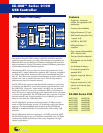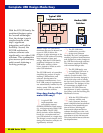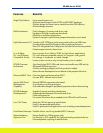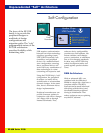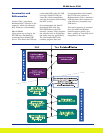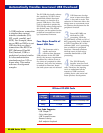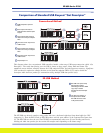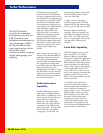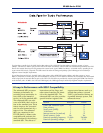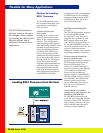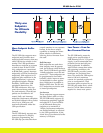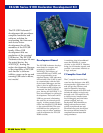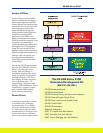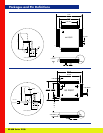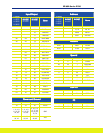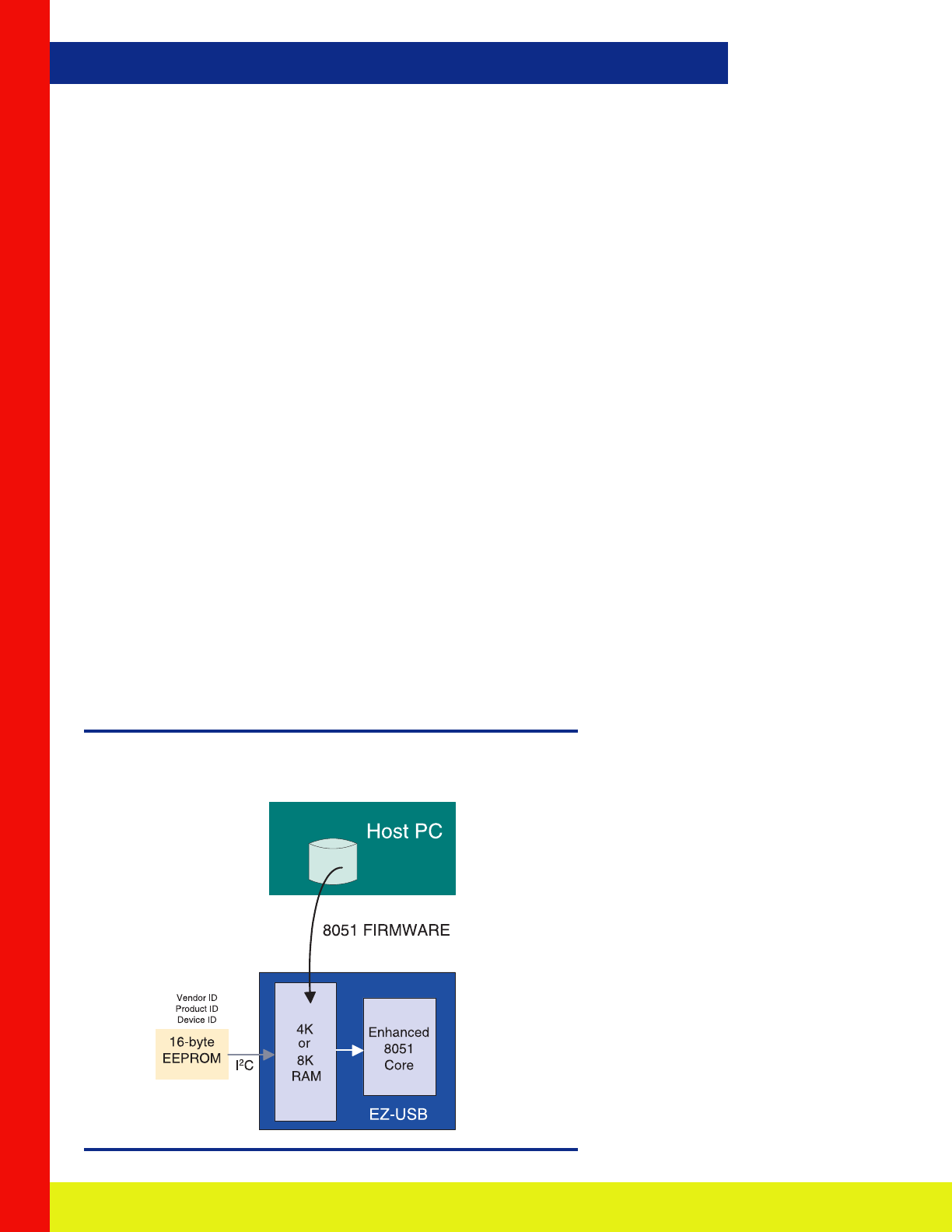
EZ-USB Series 2100
Flexible for Many Applications
Loading 8051 Firmware from the Host
Options for Loading
8051 Firmware
The EZ-USB family provides
the peripheral developer with
four options for loading its
8051 firmware.
Software file from the
host system
Loading from a software file
provides the maximum flex-
ibility to the peripheral manu-
facturer. This configuration
takes advantage of the internal
4K or 8K RAM to load 8051 code
and data from the host system.
Because of the ReNumeration
capability of EZ-USB chips, a
new set of descriptors can be
loaded after the initial enumera-
tion without physically discon-
necting the device. This allows
device descriptors and 8051
program code to be loaded from
a driver disk. Only the vendor
ID, product ID, and device ID
need to be loaded during boot
time in hardware through a 16-
byte EEPROM. Using this
EEPROM loaded through the
I
2
C port
The EZ-USB architecture supports
an external EEPROM load
through the I
2
C bus. This gives
designers the capability to load
8051 program code from hard-
ware. Because of the flexibility of
the external EEPROM and inter-
nal RAM, manufacturers have the
option to make last-minute
changes to a design/code without
impacting production schedules.
External memory through the
memory expansion port
External memory may be added to
EZ-USB family members in the
80-pin PQFP package. This
memory is available through a
memory expansion port. Separate
16-bit address and 8-bit data
busses are also available to
directly attach to a 64K EPROM,
SRAM, or Flash memory. Unlike a
standard 8051, the address and
memory ports are not multi-
plexed, eliminating the need for
glue logic for connection to
external memory.
Internal ROM for peripheral
manufacturers who migrate to the
ROM-based EZ-USB chip
EZ-USB ROM options are soft-
ware and pin compatible to RAM
members of the family. Therefore,
high-volume customers can move
easily to ROM when their 8051
firmware code is solidified.
The EZ-USB architecture
includes features that give
the designer many options
for creating an efficient and
effective design that is
tailored to the needs of an
application.
configuration, users can implement
a USB function in a tiny 44 PQFP
package yielding a complete USB
solution in less than one square
inch of PC board space.



